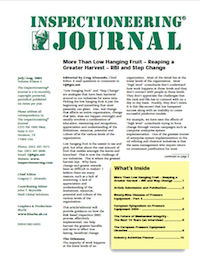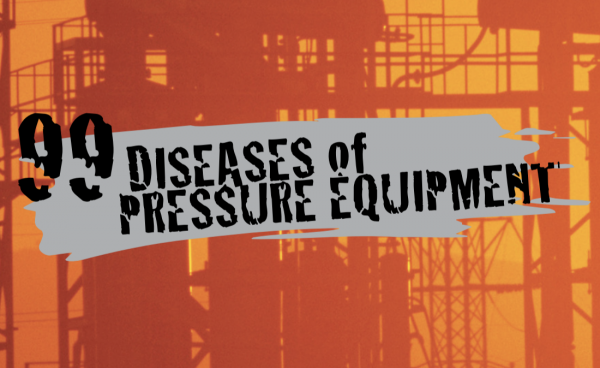
| Date | July/August 2003 |
| Volume | 9 |
| Issue | 4 |
| Return to Journal Index | |
July/August 2003 Inspectioneering Journal Article Index
This is the name given to a form of embrittlement that occurs in 400 series of stainless steels, duplex SS's and less commonly in some 300 series stainless steels containing a metallurgical phase called ferrite. The embrittlement occurs from 600...
Cavitation is the sudden formation and immediate collapse of vapor or air bubbles in a liquid stream when system pressure falls below the vapor pressure of the liquid. The sudden collapse of these tiny bubbles generates enormous, though tiny forces...
Graphitization is not something that operators can do much about, and thankfully it is not very common. We as engineers and inspectors have to know about this one and prevent it or detect it. It occurs when the microstructure of some carbon and...
This failure mechanism is unfortunately all too common in our industry. It's also known as stress rupture, and it is usually entirely preventable by proper maintenance and operating procedures. It occurs when equipment, piping or furnace tubes...
Thermal shock is another one of those pressure equipment afflictions where communication with operating groups is a vital factor in prevention. Thermal shock failures usually involve sudden quenching of high temperature equipment and furnace tubes...
Few of us have not experienced or heard about vibration fatigue (cracking) failures, especially around pumps and compressors. Typically small branch connections, equalizer lines, vents and drains are susceptible, especially if they are screwed...
"Low Hanging Fruit" and "Step Change" are analogies that have been bantered around in our industries for some time. Picking the low hanging fruit is just the beginning and something that most passersby can glean. Also, real change that affects an...
Contact us at buddy@dimate.de to learn how DIMATE PACS digitizes NDT methods (RT, UT, VT, ...) and how it leads to paperless inspections.
This document gives an overview about the structure and the contents of the Pressure Equipment Directive.




















